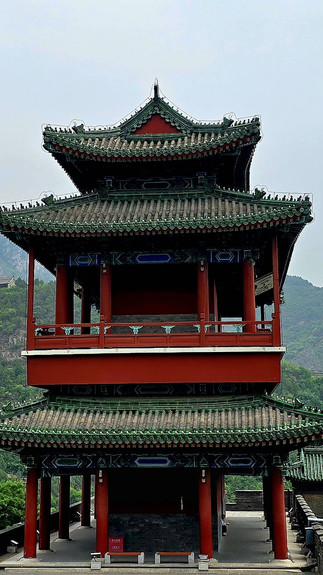The Great Wall of China - A History Carved in Blood and Stone
- Shannon
- May 14
- 4 min read
Updated: Jul 31
A Silent Witness to Sacrifice and Survival
Stretching over 21,000 kilometres across rugged mountains, arid deserts and sweeping valleys, the Great Wall of China stands as one of the most iconic and enduring structures in human history. Built, rebuilt and expanded over many centuries by a succession of Chinese dynasties, this colossal fortification was designed to safeguard the Chinese empire from invading forces, particularly the nomadic tribes from the northern steppes, including the Mongols. Today, it remains a powerful symbol of China’s historical resilience, architectural ingenuity and cultural legacy.

The Great Wall isn’t a single continuous barrier but rather a vast and intricate network of walls, watchtowers, trenches and fortifications built by various Chinese dynasties over the course of more than 2000 years. The earliest sections trace back to around 475BC, when several independent kingdoms constructed their own defensive walls to guard against invasions from northern tribes. However, it was Emperor Qin Shi Huang, the first Emperor of a unified China, who is credited with connecting and expanding these segments into a more cohesive defense system around 221BC. The most well preserved and iconic sections visible today were extensively rebuilt and reinforced during the Ming Dynasty in the 14th century, reflecting advanced construction techniques and a renewed focus on military strength.

Historians estimate that millions of peasants, convicts and soldiers were conscripted over the centuries by successive rulers to construct the monumental wall. The working conditions were brutal, harsh weather, grueling labour and a constant lack of adequate food and medical care led to countless deaths. Due to the staggering loss of life, the Great Wall has often been called "The Longest Cemetery on Earth." While most of those who perished were likely buried in unmarked graves or shallow pits near the wall, a long-standing belief persists that some may have been entombed within the wall itself, either out of convenience or as a grim means of reinforcing its structure.
One of the most famous Chinese folk tales connected to the Great Wall is the Legend of Meng Jiangnü. Her husband was conscripted to build the wall shortly after their marriage. When she received no news of him for months, she set out to bring him warm clothes. After a long and perilous journey, she arrived at the Wall, only to learn that he had died from exhaustion and been buried beneath the structure. With overwhelming sorrow, she wept for days at the base of the wall. Legend says her grief was so powerful that a section of the Wall collapsed, revealing her husband's bones. The emperor, fearful of her supernatural power, offered to marry her to calm the gods, but she leapt into the sea rather than accept his hand, becoming a symbol of loyalty and resistance. The story emphasises the suffering of the common people under imperial rule and the emotional weight that lies beneath the Wall's ancient stones.

The Great Wall of China reflects centuries of sacrifice, its history carved in blood and stone
Located 50km's north of Beijing, the Juyong Pass was specifically constructed in 1342 and is one of the most historically significant military sites along the Great Wall. Nestled in a narrow valley surrounded by towering mountains, the pass created a natural choke point, making it an ideal location for controlling access to the capital. Its strategic position allowed for tight security, as defensive platforms were built to enable soldiers to closely monitor and intercept any approaching armies. Over time, the Pass became a key defensive stronghold, offering both a vantage point and an effective line of defense against invasions.
The Great Wall of China stands as a powerful symbol of human perseverance, ingenuity and the unyielding desire for protection. Spanning thousands of kilometres and built over two millennia, it is not just an architectural wonder but a reflection of the many struggles, sacrifices and triumphs that shaped the Chinese people. Whether you view it as a physical structure or as a metaphor for resilience, the Great Wall remains an enduring testament to the past and a bridge connecting history with the future. Its stones, whispers of ancient tales and beauty will continue to inspire for generations to come.

🗺️ Location
Juyong Pass, Changping District, Beijing, China
🚆 How to get there
By train, you can first take subway line 8 or line 13 to get to Huoying Station and exit from G4 to find Huangtudian Railway Station. Here take the train S2 to Badaling Railway Station, then take a free shuttle bus to Badaling Bus Station, where you can transfer to bus 879 to get to Juyong Pass. Alternatively jump on a day tour as we did and the tour bus will take you directly from your hotel to the gate.
⭐ Attraction Info
A general entrance ticket for the Juyong Pass Great Wall scenic area is ¥35 per person and it is open all year round between 6:30am to 6pm. Due to it's popularity, it is advisable to purchase tickets online and in advance As with most Chinese tourist attractions, make sure you travel with your passport.
万里长城














